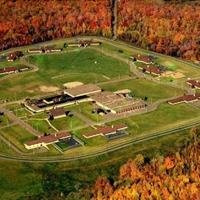40 Fun Fraction Games and Activities for Kids

When you want to talk about something that is less than 1, what do you do? Well, in most cases you use fractions! Fractions are unusual numbers, and they can be challenging for kids. But they are also numbers we use all the time in our daily lives when shopping, in the kitchen, in sports, and even when sharing food. So fractions are important. The good news is fractions can be fun to learn with fraction activities. Getting hands-on and exploring fraction activities on a physical level is key to true understanding. These great games and fraction activities will help your students whether they’re early learners or fraction aficionados.
40 Fraction Games and Activities for Kids
1. Doughy Fractions Exploration
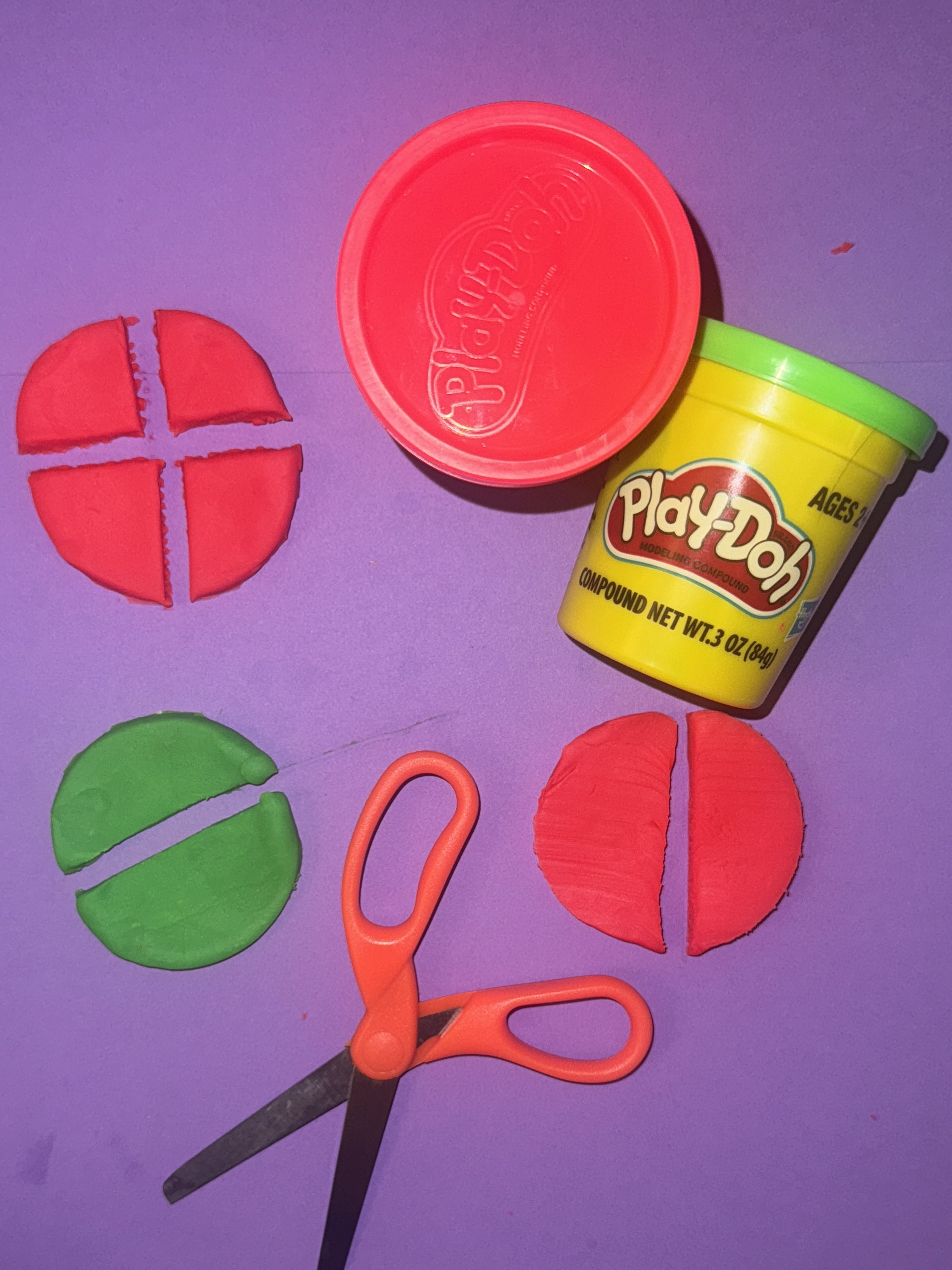
Use cups, cookie cutters, plastic knives, and play dough to get hands-on in creating some fractions. Have students flatten out play dough on a plastic plate and then cut it into circles with cups. Use plastic cookie cutters or plastic knives to slice up the circles into fractions. Have students explore, emphasizing the idea that fractions are equal parts. Use this guiding prompt for the task: “Let’s find out how many different ways we can cut a circle into fraction parts.” Have students make as many different circles as possible so they can model a variety of fractions.
2. Sticky Note Fractions
For these fraction activities, use colorful sticky notes, scissors, rulers, and markers or pencils to create a Fantastic Fraction bulletin board. Give students these supplies and ask them to create at least 10 different fractions and label each one. These can then be put up on a bulletin board and sorted and arranged by fraction name. All eighths in one section, all fourths in another, and so on. Students can put them on the board and check to see if there are any fractions that are not up yet that they would like to add in, and then go make them.
3. Fraction Goal!
You can play this a lot of ways, but here’s an easy way you can do it in the classroom. Turn a plastic cup on its side on a desk. Measure 5 inches back from the cup and put a tape mark there. Give players a cotton ball. The cotton ball is placed on the tape line. Players take turns flicking the cotton ball toward the cup trying to get it in. If they get it in, they score a goal! Players keep track of their attempts and how many they actually get in. They then write their success rate as a fraction. If I try eight times and get it in four times, I made 4/8 or 1/2 of my attempts. You can set the number of attempts depending on what kinds of fractions you want students to work on.
4. Fraction Pair Pickup
Give students a pack of index cards and a list of targeted fractions. Students create the deck, or you can download cards for free. Make sure there are plenty of equivalent fractions. Students partner up and put a deck of these fraction cards in between them. They take turns pulling cards and putting them out face up one by one. If a player picks a card and sees an equivalent fraction already out, they can pick up and keep both cards. If they can’t find an equivalent fraction, they lay their card down as well. The player with the most cards wins.
5. Is It a Fraction?
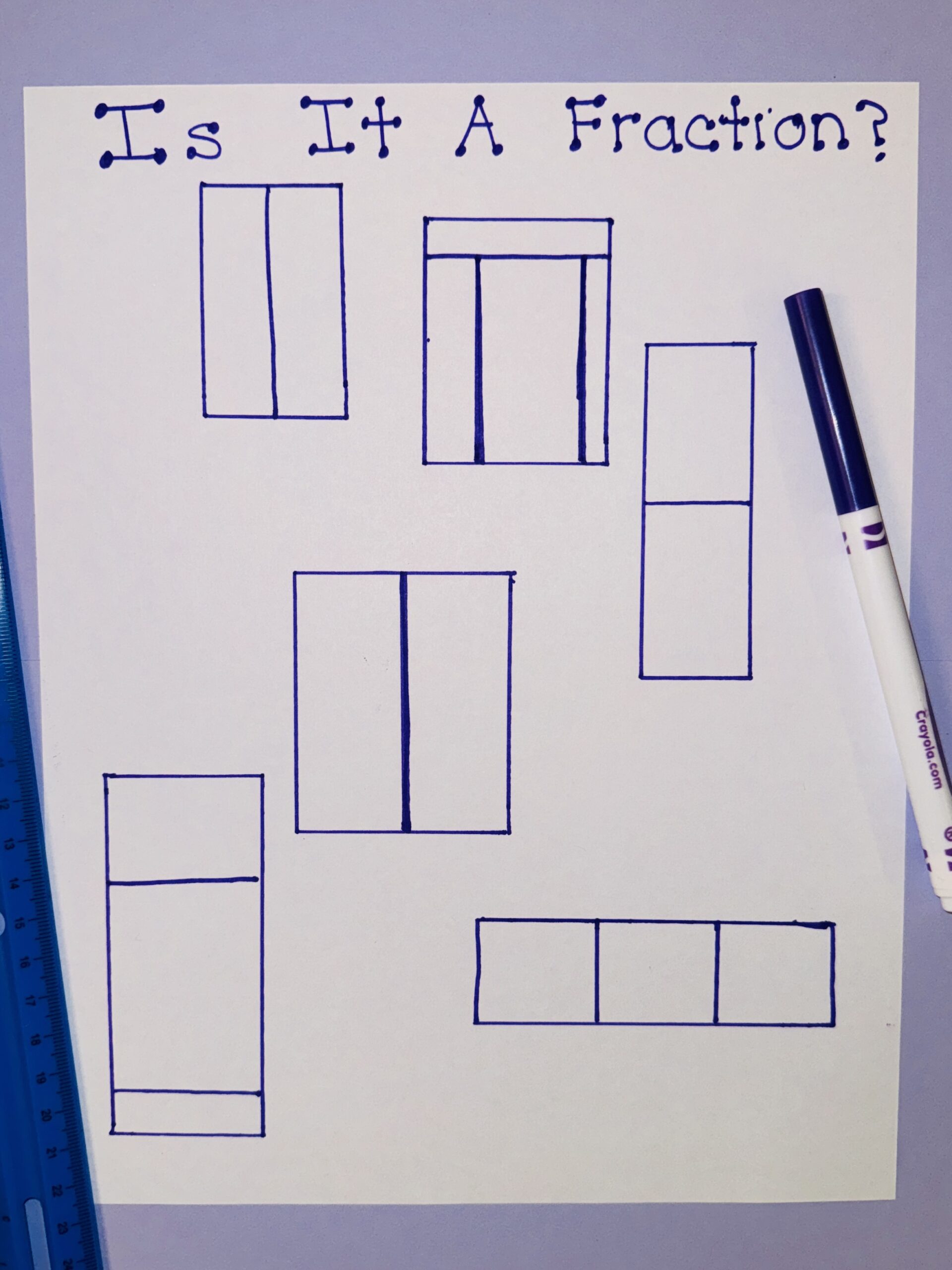
Give students a piece of drawing paper, a pencil, a ruler, and some crayons or colored pencils. Ask them to draw six rectangles and/or squares. Then using their rulers and pencils, they should divide up four rectangles into fractions with equal parts. The remaining two should be divided up into unequal parts. They should then trade papers with a partner and see if they can each find the partner’s rectangles that are NOT cut into fractions.
6. Noodling Around With Fractions
You can make some great fraction models using pool noodles. These models are very motivating to use, quiet, easy to understand, and great for showing equivalent fractions.
Learn more: Teach Fractions Using Pool Noodles
7. What Fraction of the Class …?
For this fraction activity, write a question on the board that asks students to look carefully around and answer a fraction question based on their classmates. For example, you might ask, “What fraction of the class is wearing shorts today?” or “What fraction of the class is wearing sneakers?” This is a non-speaking activity. All students should stand in a circle for two minutes while everyone calculates their answers using whiteboards and markers or paper and pencil. Then they sit down right there and raise their hand to answer. For a bonus, ask if anyone can come up with an equivalent fraction that would also answer the question. Try a few questions like these.
8. Fraction War
You can build and compare fractions with this game. Get a deck of cards and remove face cards. Each player needs a pencil. The object of the game is to create the largest fraction. Players put the pencil down on the desk and draw a card. They place it above the pencil if they want it to be the numerator and below the pencil for the denominator. Once placed, it can’t be moved. Players take turns pulling cards from the deck and placing them. When all four cards are placed, the resulting fractions are compared and the largest wins.
Before you begin, decide if fractions can be improper or not. If not, and an improper fraction is created, the player loses that round.
9. Fraction Card Bingo
Provide students with a set of fraction cards or have them make them with index cards. Appoint one student as the caller and give them a full deck of fraction cards. Other players get their decks, and on their desks, they lay out a 4 x 4 bingo card with a total of 16 cards. The caller pulls a card and says what it is while showing it to the class. Players look at their bingo card and if they have the same fraction, they turn that card face down. Once they have four cards in a row turned down in any direction, that’s a Fraction Bingo.
10. Fraction Street
Give each student drawing paper, a ruler, a pencil, and crayons. Explain that you are asking them to draw a picture of Fraction Street. Write the details about the street on the board to have students work on the fractions you would like them to target. For example, you might write, “There are four houses. Half of the houses have red doors and half have blue doors. Three-quarters of the houses have brown roofs, and one-quarter of the roofs are green. There are six cars; one-third of the cars are black, one-third of the cars are blue, and one-third of the cars are yellow.”
You can write about windows, shutters, trees, chimneys … really anything you might find on a street. Students should read the details carefully first before they begin drawing and coloring.
11. Fraction War
This is just like the classic game of War except the cards are fraction cards. Players are given a deck of fraction cards or they make a set from index cards. The deck is shuffled and dealt out so each player has half the deck. Players take turns picking a card from their stack and putting it out in the middle. Whoever has the biggest fraction wins both cards. If it is a tie with equivalent fractions, three cards are dealt face down and a final fourth is turned up. Whoever has the highest fraction turned up wins all the cards. Play until individual stacks are gone, then count cards to find the winner.
12. Fraction Squeeze
Students take a set of fraction cards and split the deck. On a desk, table, or floor, players stretch a piece of yarn to serve as a number line. At one end they place a 0 card and at the other a 1 card. Players take turns picking a card from the top of the deck and placing it on the number line approximately where it would belong. For example, if I pull a 1/2 card, I should put it about halfway between 0 and 1. Players take turns trying to place as many cards as they can. Sometimes you get squeezed and there’s nowhere to put your card, so you keep it. The player with the fewest cards at the end wins.
13. Fraction Hopscotch
Here’s one of the lively fraction activities to get kids moving while thinking about fractions. Draw a hopscotch board on the playground or outline one with tape on your classroom floor. In each square, write a fraction you want to work on. Have students toss a beanbag and jump to where it lands. Once they are on the square, they have to read the fraction aloud and name an equivalent fraction. Encourage students to try to land on every square by targeting their beanbag tosses. Whoever gets every fraction wins.
14. Dough Ball Fractions
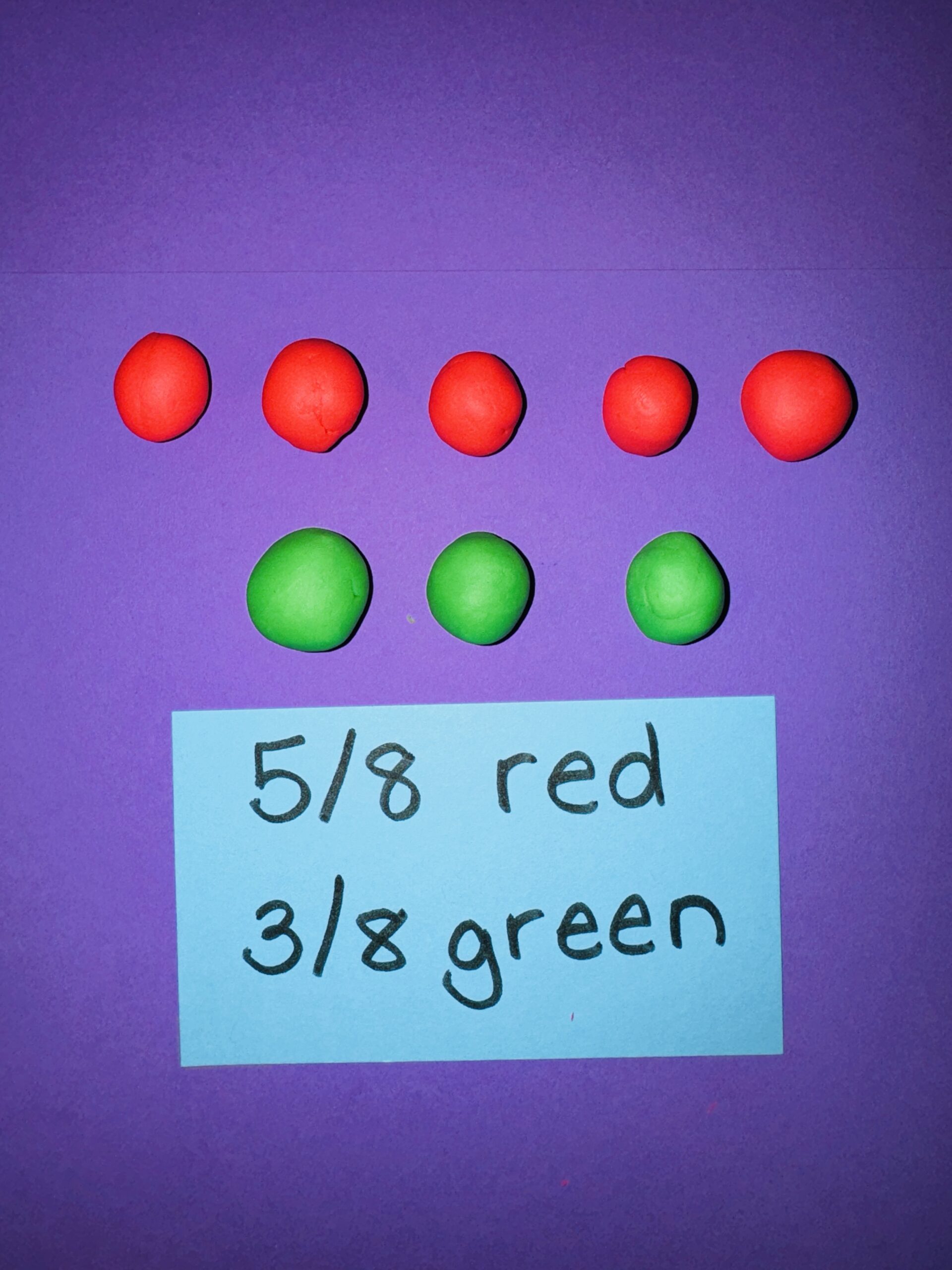
Break out the play dough again. Make sure everyone gets two colors of play dough. Have students create small balls of play dough to model fractions of a set. For example, a student might make five red balls and three blue balls. They could then write a small sign under their model that says, “5/8 red, 3/8 blue.” Signs can be made of card stock cut and folded in half so it stands up. Let students try to make lots of models. It’s a great way to explore and learn about fractions of a set in a motivating, hands-on way.
15. Fraction Spin To Win
This is one of the easiest fraction activities to DIY. It’s easy to make a spinner with just a paper clip and a pencil. The actual spinner board should use fractions. Choose a spinner board you want to use. The most common game has players taking turns spinning to try to get the largest fraction. You can also play for the lowest fraction. With either goal, it’s a great way to practice comparing fractions.
16. Fraction Add-Up
Partners get a set of fraction cards and lay 25 cards face down on the desk. Players take turns flipping over two cards, adding them together, and saying the sum. Whoever has the largest sum wins that round. As players become more skilled, you can play this with three or even four cards. As players create these addition sentences, they should record them to show the teacher at the end of the game.
17. Getting To Know You With Fractions
Break the class up into small groups of three or four and assign a question about the class to each group. Students go around surveying one another and recording answers as they learn more about one another. Questions like, “Do you have a pet?” or “What is your favorite sport?” work well. Teams record and compile their data and then report back their findings in fractions. For example, if 8/24 students like soccer, the team can share this data by writing on the board a sentence like, “8/24 or 1/3 of our class likes soccer.” These results can be shared on the board or in a poster the team creates.
18. Beat That Fraction!
Deal out a deck of playing cards to each player. Players keep cards hidden and fan them out so that only they can see them all. They look through their cards and pick two that they believe will form the largest fraction they can make. When the dealer says “Go,” players put out their two cards one above the other to form a fraction and say, “Beat that fraction!” Players compare fractions and decide on which is the largest. The player with the largest fraction wins all the cards and puts them in their win pile. The person with the most in their win pile wins the game.
19. Secret Fractions
Here’s a good small-group game. To prepare for the first round, each player thinks of a fraction and writes it down on a piece of paper. They then write three clues about the fraction on a whiteboard and three possible fractions, including the correct one. For example, if the secret fraction is 2/3, the choices might be a) 2/3, b) 1/3, and c) 2/4. The clues could be something like a) I’m more than 1/2, b) I have a 2 in the numerator, and/or c) I’m equivalent to 8/12. Players take turns leading and guessing and then erase their boards to begin the next round.
20. Fraction Trains
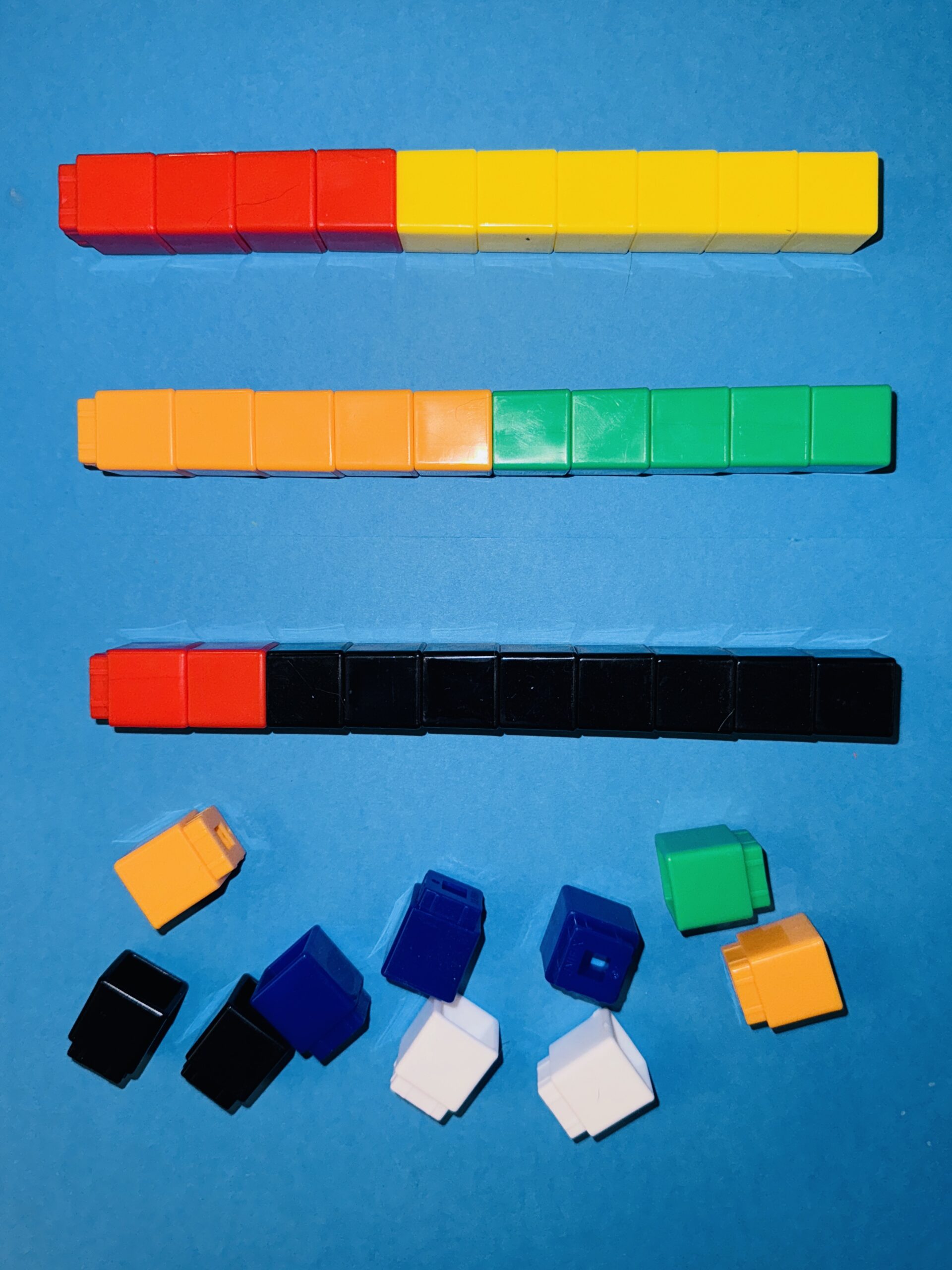
Provide students with multi-link or Unifix Cubes for this exploration. Make sure students have at least two colors of cubes. Explain that they are going to build some fraction trains, that each cube they use is a train car, and that each train should show a fraction. If you link five blue cubes and five red cubes together, you are modeling 1/2 red and 1/2 blue or 5/10 red and 5/10 blue. Ask students to write down all the fractions they have made and share these when the teacher inspects their models.
21. M&M Fraction Models
You can use M&Ms to model fractions of a set in a lot of different ways based on their colors. Begin by opening a large bag of M&Ms and distributing them into small bowls for each student. Also give each student a napkin. Models will be created on the napkin. Give students prompts such as, “Make a fraction model to show me 1/2.” Students would then create a set of M&Ms, say eight, where four are red and four are brown. Let students take turns giving prompts to the class.
22. Too High/Too Low/Just Right
This is one of the good fraction activities for working on comparisons and mathematical thinking. Each player gets a set of the same fraction cards. The lead player chooses a card from their deck and lays it face down. This is the Secret Card. The second player tries to guess what the card is by laying down what they believe is the same card. The lead player gives feedback each time, saying one of three things; just right, too high, or too low. Based on these clues, the second player puts out another card. More feedback follows until the second player lays down the matching value card. Record how many cards were played. Players switch roles. Whoever plays the least number of cards in a round wins that round.
23. Graph Paper Fraction Designs
Give each student a piece of graph paper, a pencil, a ruler, and a set of crayons or colored pencils. Kids love coloring and creating on graph paper. For this activity, ask students to make a design of any kind. The only limit is that you can only use 30 squares (or any amount you choose). It could be a house, a robot, a car, or just an artistic design. Use a variety of colors. Then students write the name of each color and next to that write what fraction of the design is that color.
24. Subtraction Fraction Action
This is one of the good, simple partner games for practicing subtraction with fraction activities. Players each flip over two cards from a deck of fraction cards. Each player then places their two cards next to each other and subtracts the smaller fraction from the larger one. Whoever has the lowest answer is the winner of the round. Have students record the number of sentences from each round for checking.
25. Step on a Fraction
On the playground, use colored chalk to write a variety of fractions in a circle. Have two players stand in the middle of the circle. Other players stand in a circle around the fractions. Take turns calling out a fraction that’s chalked on the playground. The two players in the middle try to be the first to step on that fraction. Whoever gets there first gets to stay in the middle until someone gets to a fraction faster than they do.
26. Coloring Book Fraction Activities
Students often need to practice reading and writing fraction words as we don’t do it much normally. Take a page from a coloring book and divide the drawing into sections. In each section, write a fraction. Have a key on the bottom of the page that uses word form to describe the fraction and next to it, the color that fraction should be. For example, you might write, “one-fourth = blue, one-eighth = red,” and so on. Students color their pictures accordingly. These are actually fun for kids to make on their own for homework. When they bring one in, make a copy for everyone and let them try it out.
27. Dozen Domino Fraction Order
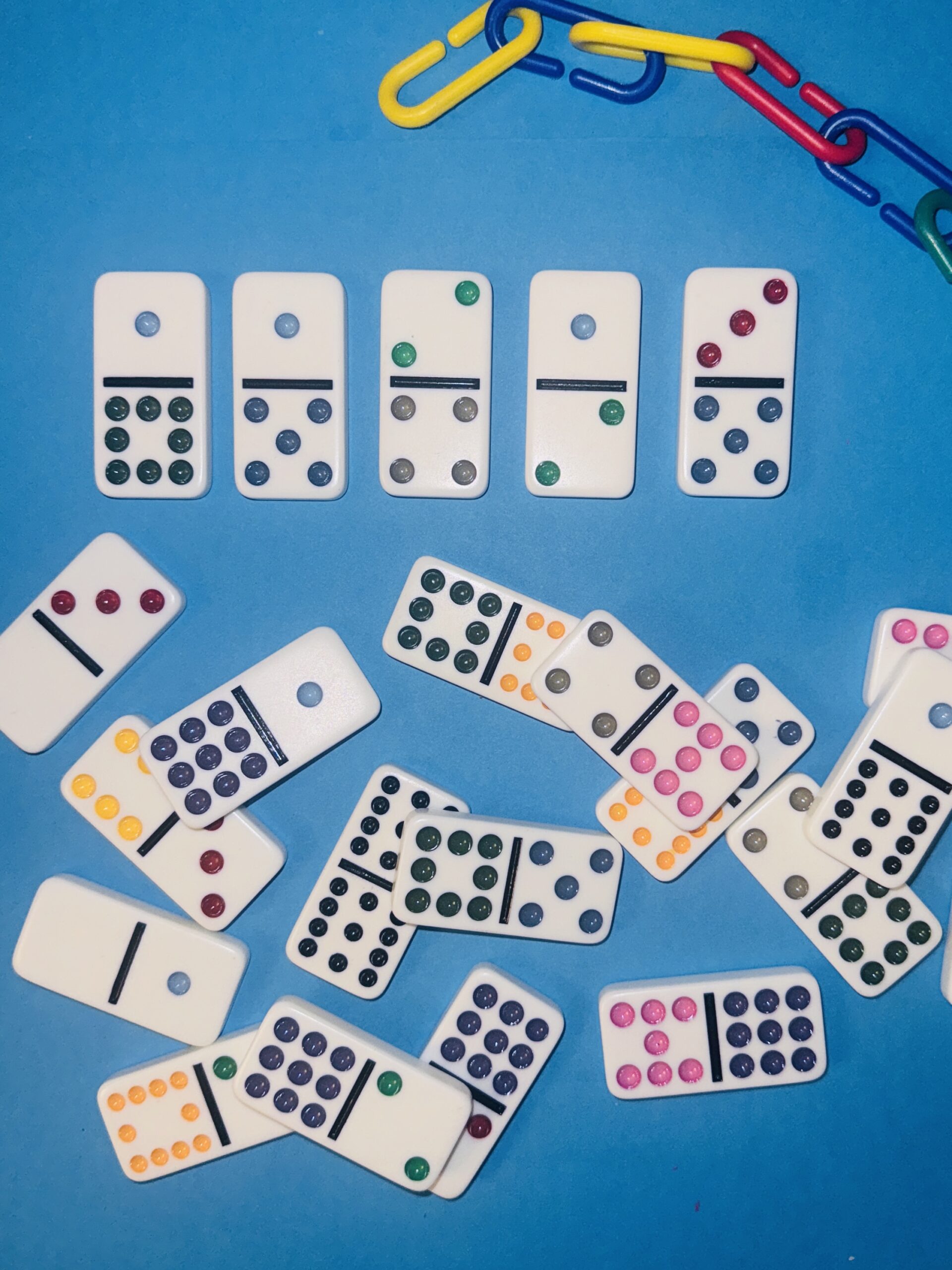
Every domino can be looked at as a fraction, with the dots on top representing a numerator and the dots on the bottom the denominator. With this in mind, put dominoes in a bucket and have partners take turns pulling out a domino. They lay dominoes side by side and compare them as fractions, putting them in order by size. Each time they pick a new domino, it gets placed in the line of dominoes according to how big or small it is. Dominoes can be moved around. Play until 12 dominoes are placed, then share the results with the teacher.
28. Is My Half Equal to Your Half?
The actual amount of a fraction depends on the whole you are working from. For example, half of a peanut is a much smaller amount than half of a watermelon. To help get this idea across, have students bring in jar lids from home. These will come in a variety of sizes. Ask students to use a marker and a ruler and divide two different-size lids in half. Are they the same? Different? In what ways? Discuss these questions and then try another fraction like 1/4. Have the same discussion. Kids will quickly get the idea.
29. Macaroni Fraction Bracelet
Buy some dry macaroni. Spray-paint the macaroni a couple of different colors. When dry, bring them in and show the class and tell them they will be making a macaroni fraction bracelet. Give each student some yarn. Have them measure their wrists, or their necks if you want to do necklaces. Using a ruler, pencil, and lined paper, have them write out a plan for the bracelet or necklace showing how many macaroni beads will fit, what color, and the pattern. Then they need to write what fraction of the bracelet will be in each individual color. Once you approve the plan, off they go to create their own.
30. Fraction Word-Picture-Number Match
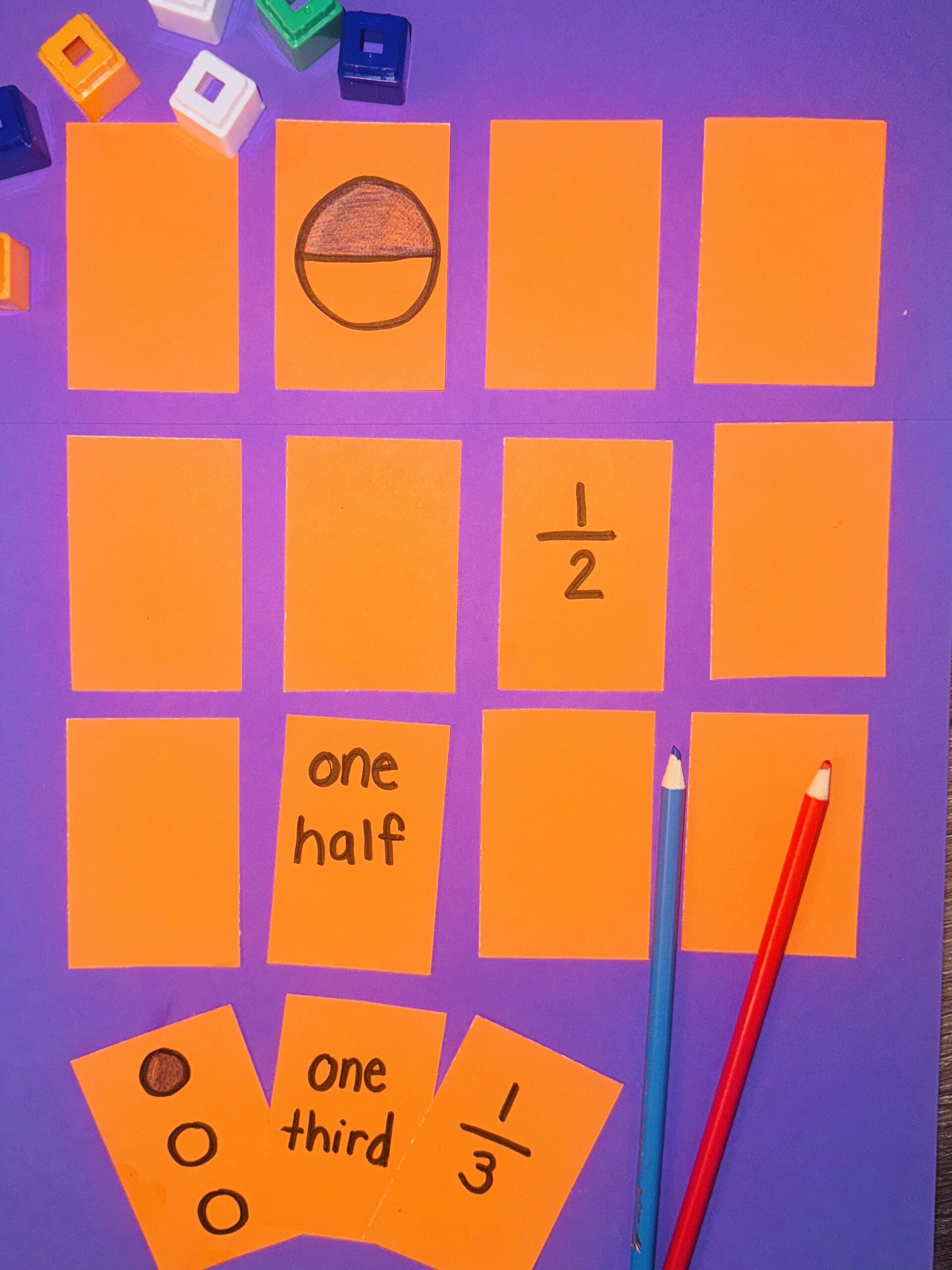
Give each student three index cards. Assign them a fraction to write. On one card they should write the number form, on another a picture, and on the third the word form. Collect these to form a class set. Spread the cards out face down on the carpet and have the class gather around. Divide them into teams that will work together. Play this like Concentration where students can tell you which three cards to turn over. If all cards match, they keep the three cards. The team with the most cards wins.
31. The Mysterious Fraction Stealer
Here’s a playful way to work on equivalent fraction activities. Write a series of equivalent fractions on the board such as 2/4 = 4/8 before the class comes in the room, and erase one digit from each number sentence. Once the class comes in, show them the (incomplete) fractions and explain how the Mysterious Fraction Stealer was here and stole parts of fractions. It is our job to put them back where they belong. Have students take turns coming up and entering the missing digits so the number sentences are true.
32. The Fraction Museum
Put out sets of a variety of manipulatives including cubes, blocks, counters, LEGO bricks, and so on. Explain to students that each of them will be setting up a fraction museum on their desks. They should have at least 10 exhibits. Each exhibit is a model of a different fraction. Next to the exhibit, they should create a small sign out of card stock that they can fold and stand up so people can easily read it. Students use manipulatives as needed. After everyone is finished, invite students to get up, walk around, and tour the museums. Here’s a link to a video of the original lesson with Bob Krech.
33. Bowling for Fractions
Here’s an active way to practice adding multiple fractions. This game can be played inside or outside. Have students bring in clean, washed plastic bottles—2-liter soda bottles work well. Take sticky notes and write fractions on these that you want students to practice. Put a sticky note on each bottle. They are now fraction bowling pins. Set the pins up in the traditional style. Have players move at least 15 feet back from the pins and then roll a tennis ball (or ball of your choice) at the pins. Whatever pins get knocked down must be added together to create the score for that round. Have partners take turns rolling and setting pins. All scores should be recorded. Highest score in a frame wins.
34. Roll a Fraction
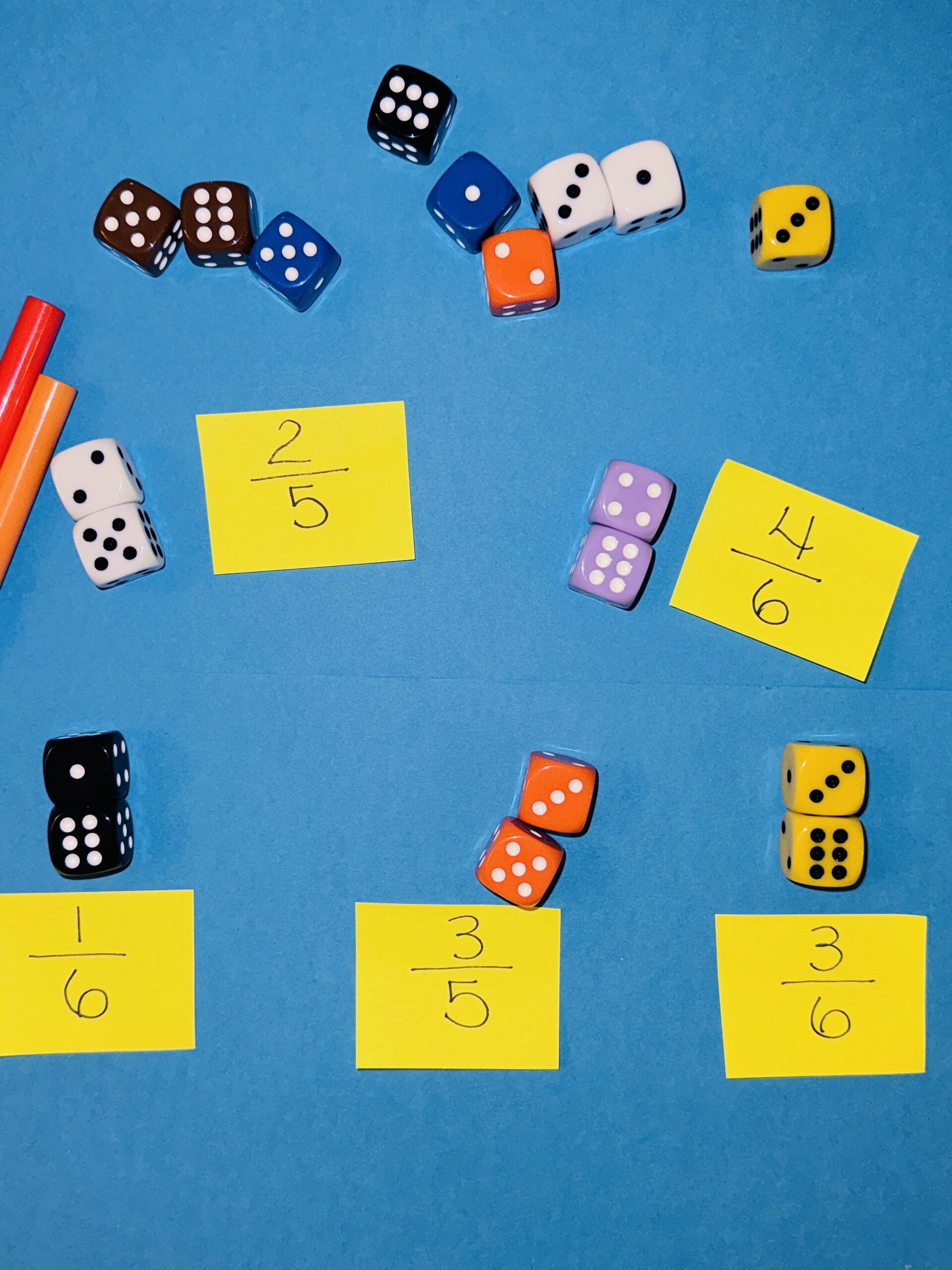
Each player has a pair of dice. They roll the dice and stack them one on top of the other to create a fraction. If I roll a 6 and a 3, I could make 3/6 or 6/3. Players take turns rolling and writing their fractions down. Improper fractions should be rewritten as a mixed number. The highest fraction wins each round.
35. Fraction Find
Fractions are all around us. To help build student awareness, bring in newspapers, magazines, and store flyers. Give students scissors, a glue stick, a pencil, and drawing paper. Students look through the papers and try to find as many fractions as they can. They cut them out, glue them on the paper, and write a sentence or two underneath each one explaining what the fraction is talking about.
36. Fraction Pizza Order
Give each student a piece of drawing paper, a pencil, and crayons. Ask them to draw a large circle or rectangle. Explain that this is the pizza order template and that the drawing is an outline of the pizza. You will be writing an order on the board and they should decorate their pizza to reflect that order. For example, you might ask for 1/2 mushroom, 1/4 pepperoni, and 1/4 peppers. Students would then divide the pizza up with the ruler and pencil and draw and color accordingly. Let students take turns placing pizza orders for the class.
37. Fraction Multiplier
Give partners a set of fraction cards and a pair of dice or number cubes. Players take turns picking a fraction card from the deck and laying it face up. They then roll the number cube or one of the dice and multiply their fraction card by the number on the cube or die. If I pick a 1/2 card and roll a 3, my problem is 1/2 x 3. Players should record the problems for each round on a piece of paper. The highest score in each round wins that round.
38. Tiny Towers
Most rulers are full of fractions and most classrooms have rulers. You can help build student awareness of this fact with Tiny Towers. Make sure each student has a ruler, pencil, and drawing paper. Ask students to describe the fractions they see on the ruler. Are they all labeled? Do they see lines that are not labeled that could be fractions? Discuss these observations. Then ask students to use their rulers to draw the following length lines: 1/2 inch, 1/4 inch, 3/4 inch, 1/8 inch, and as many as you can do with the markings on your set of rulers. Now ask students to draw some tiny towers. Have them draw, color, and label tiny towers that are 1/2 inch, 1/4 inch, 3/4 inch, and 1 inch tall.
39. Number Line Fraction Partners
Kids have a lot of experience with the area and set models of fractions, but not so much on number lines. Here’s a way to give them some opportunity to explore that idea. Have students draw a number line with a ruler from 0 to 1. Ask for it to be at least 12 inches long. Give a pair of students a set of fraction cards. They should sit together with their number lines and a pencil. Players take turns pulling fraction cards and then marking the fractions on both their number lines, helping each other to figure out the proper placement.
40. Paper-Folding Fractions
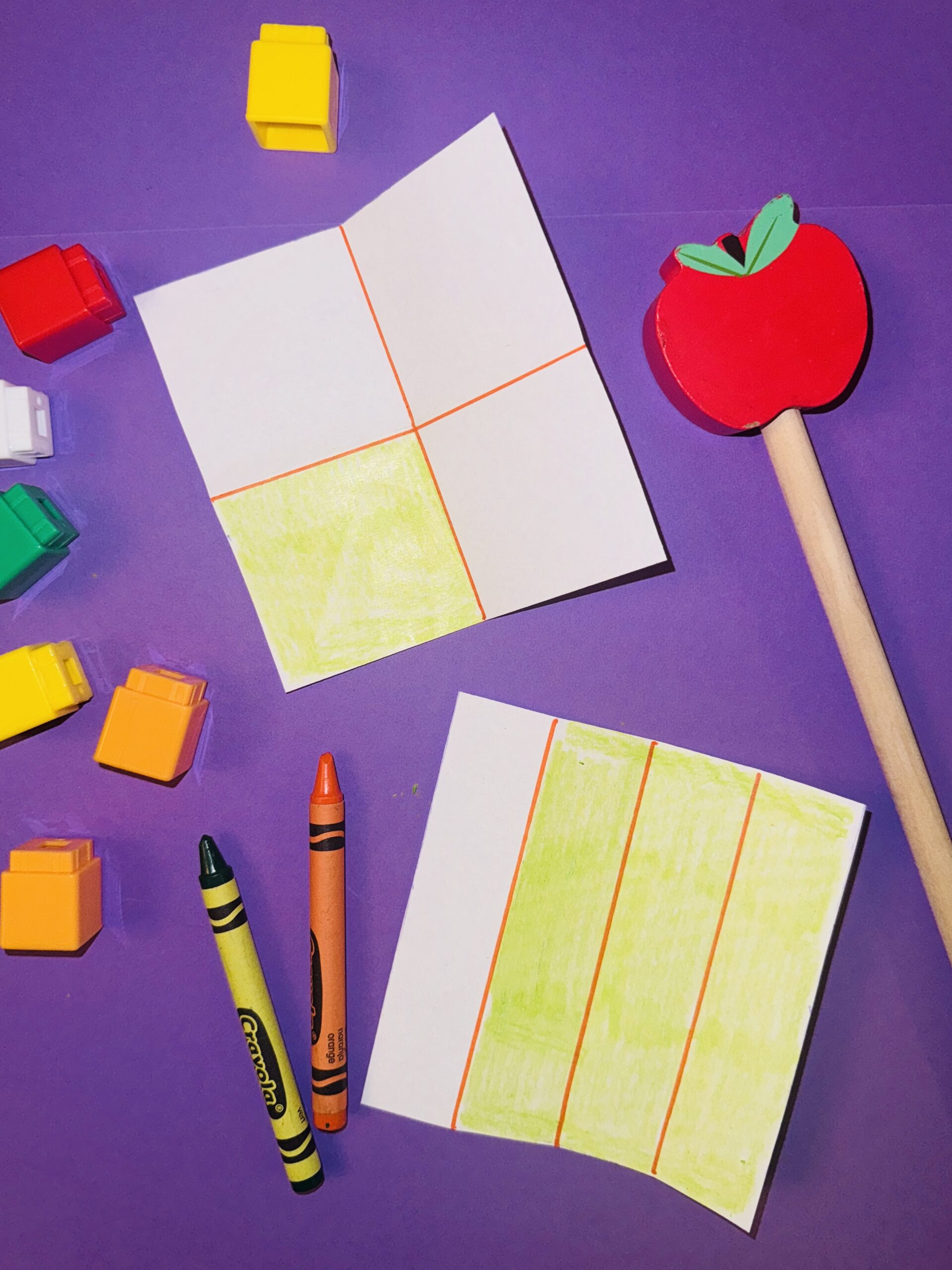
Paper folding is a great, very simple way for students to create fraction activities and see how equivalent fractions work. Give each student a piece of drawing paper, a pencil, and a ruler. Ask them to fold the paper in half, then in half again, then in half again. Open it up and trace the fold lines with a ruler. They can then label the fractions and color them however they would like. When finished, they should write down all of the equivalent fractions they can see.
To extend this, give students another piece of paper and challenge them to fold it a different way and try to create some fractions that are different from their first paper either in value and/or shape.
What are your favorite fraction activities and games for kids? Come and share in our We Are Teachers HELPLINE group on Facebook.
Looking for more fraction activities and math games? Try this roundup of online math games for every grade level.
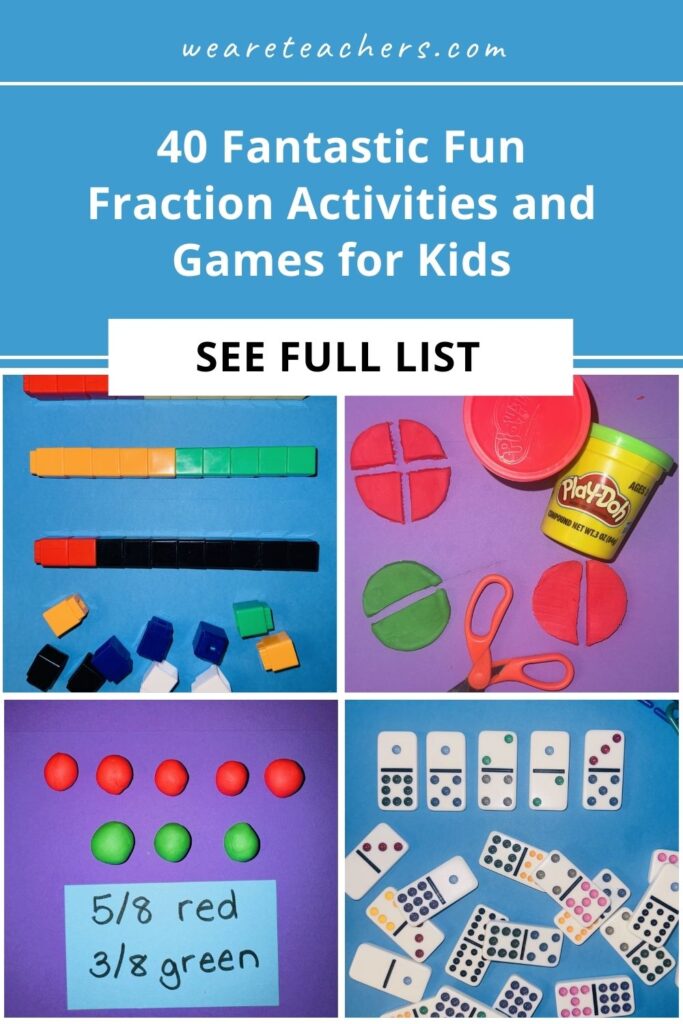
Source link





